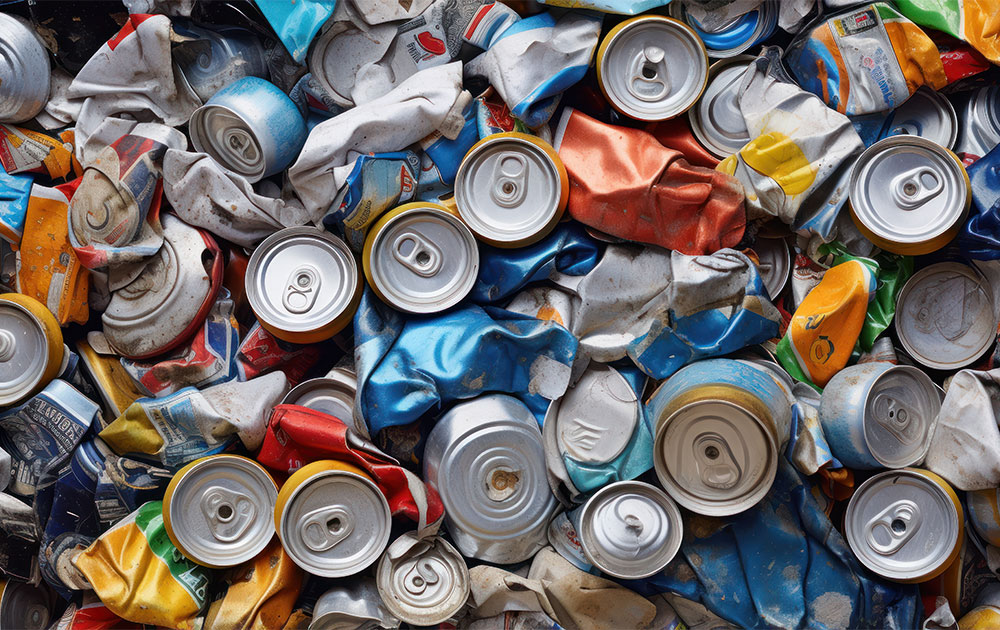Aluminium recycling is more than just an environmental initiative—it is a global solution to reduce waste, save energy, and build a circular economy.
As climate change and resource scarcity become urgent global concerns, understanding and implementing effective aluminium recycling strategies has never been more critical.
In this article, we will explore how aluminium recycling contributes to sustainability, why it is one of the most energy-efficient recycling processes, and what steps individuals, businesses, and governments can take to maximize its benefits.
What Is Aluminium Recycling?
Aluminium recycling refers to the process of recovering aluminium from used products and reprocessing it into new materials. This process requires only 5% of the energy needed to produce primary aluminium from bauxite ore.
Fact: Recycling just one aluminium can saves enough energy to power a TV for three hours.
Why Is Aluminium Ideal for Recycling?
Aluminium can be recycled indefinitely without degrading its quality. Unlike plastic or paper, which lose integrity after each cycle, aluminium retains its properties—making it perfect for sustainable manufacturing.
From beverage cans and foil to window frames and car parts, aluminium is used across multiple industries. This widespread use means there’s a constant stream of recyclable material available.
Benefits of Aluminium Recycling
- Energy Conservation: Producing aluminium from raw ore is energy-intensive. Recycling saves up to 95% of the energy, reducing industrial carbon emissions and electricity consumption.
- Waste Reduction: Each year, millions of tonnes of aluminium products are discarded. Recycling these helps reduce landfill volume and cuts down on environmental pollution.
- Economic Efficiency: Recycled aluminium is far cheaper to produce than new aluminium. This lowers manufacturing costs and creates economic opportunities in the recycling and manufacturing sectors.
- Environmental Protection: Less mining = less land disruption. Recycling aluminium minimizes the ecological impact caused by bauxite extraction, reducing deforestation and habitat loss.
Aluminium Recycling Process: Step-by-Step
Step 1 – Collection – Aluminium waste is gathered from households, commercial sites, and industrial facilities.
Step 2 – Sorting & Cleaning – Materials are sorted and cleaned to remove impurities like paint, food residues, or plastic.
Step 3 – Shredding & Melting – The aluminium is shredded into small pieces to increase surface area and then melted in a furnace.
Step 4 – Casting – The molten aluminium is cast into ingots, ready to be rolled or shaped into new products.
Step 5 – Manufacturing – These ingots are used to manufacture new aluminium products—everything from cans to automotive parts.
How Aluminium Recycling Supports a Circular Economy?
A circular economy emphasizes reuse and regeneration. Aluminium fits perfectly into this model:
- Closed-loop recycling: Products like beverage cans can be recycled and returned to shelves in as little as 60 days.
- Reduces dependence on virgin resources, preserving natural ecosystems.
- Creates green jobs in recycling facilities and sustainable manufacturing.
Global Aluminium Recycling Statistics
- Over 75% of all aluminium ever produced is still in use today.
- In 2023, more than 30 million tonnes of aluminium were recycled globally.
- Europe boasts the highest aluminium can recycling rate at 76%, while the U.S. has room to grow at 45%.
Challenges and Future Outlook
Key Challenges:
- Contamination from non-recyclable materials.
- Lack of awareness or inconsistent recycling policies.
- Economic feasibility in developing countries.
Future Innovations:
- AI-powered sorting technologies to improve recovery rates.
- Policy support for Extended Producer Responsibility (EPR).
- Green aluminium certifications to promote transparency.
FAQs about Recycling Aluminium
1. How many times can aluminium be recycled?
Aluminium can be recycled infinitely without losing quality. Unlike plastic or paper, aluminium retains its original properties even after repeated recycling. This means aluminium products—such as beverage cans or foil—can go through the recycling process countless times, making it one of the most sustainable and energy-efficient materials in the world.
2. Is aluminium better to recycle than plastic?
Yes, aluminium is significantly better to recycle than plastic. Aluminium recycling uses up to 95% less energy than producing new aluminium from raw ore and maintains its quality over multiple cycles. In contrast, plastic degrades after each recycling phase and often ends up downcycled into lower-quality products. Aluminium is also more cost-effective and environmentally friendly in long-term reuse.
3. What common items contain recyclable aluminium?
Common items that contain recyclable aluminium include cans, foil, trays, electronics, and car parts. You can find recyclable aluminium in soft drink and food cans, cooking foil, takeout trays, window frames, bicycle frames, laptops, and even some automotive components. These products can all be collected, cleaned, and reprocessed to make new aluminium items, reducing the need for raw material extraction.
4. Can dirty aluminium be recycled?
Dirty aluminium can be recycled, but it should be cleaned first for better processing. Contaminants like food residue, oils, or plastic coatings can interfere with the recycling process and lower the quality of the recycled metal. Rinsing aluminium containers and removing non-metal attachments (like labels or plastic lids) helps improve efficiency at recycling facilities and ensures the material can be reused properly.
Conclusion
Aluminium recycling is a base of sustainable development. It conserves resources, reduces greenhouse gas emissions, and promotes a cleaner planet. By supporting aluminium recycling at every level—from your home to global industries—you are helping shape a greener, more resilient future.
